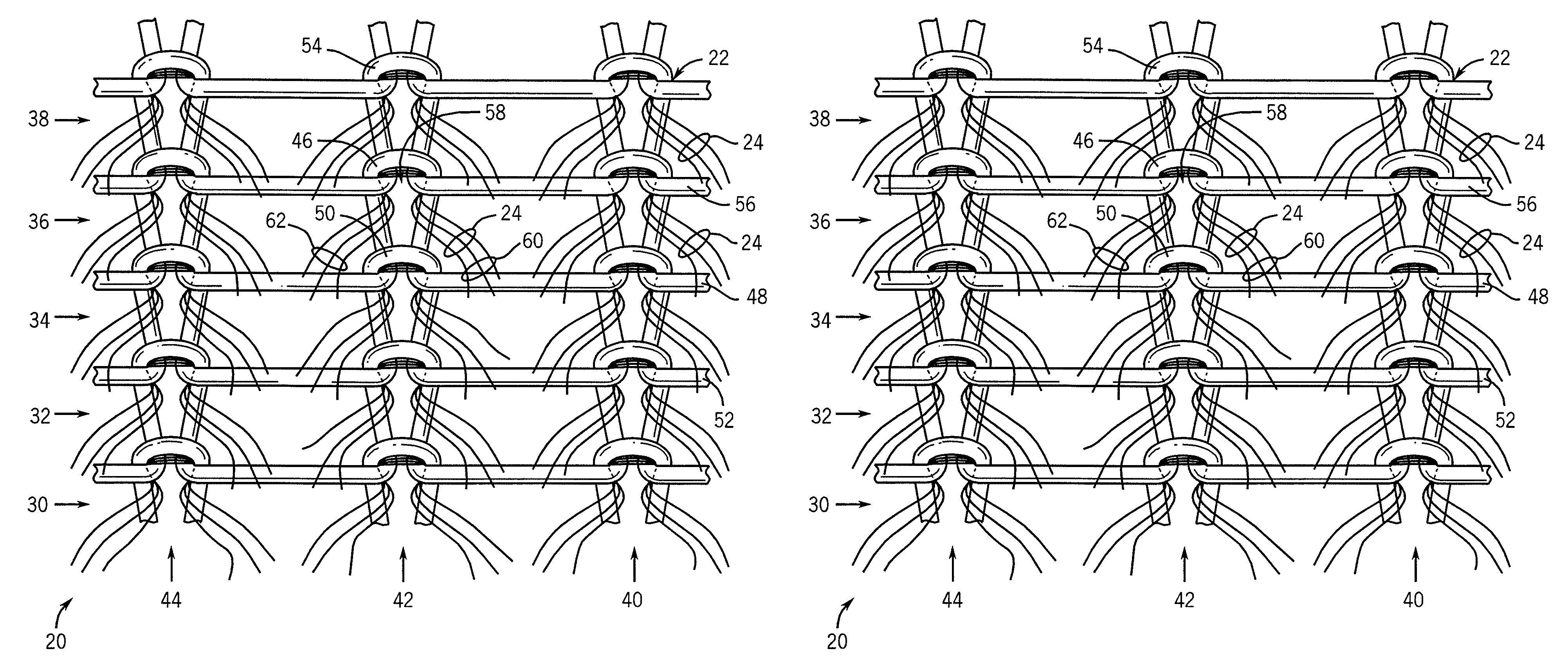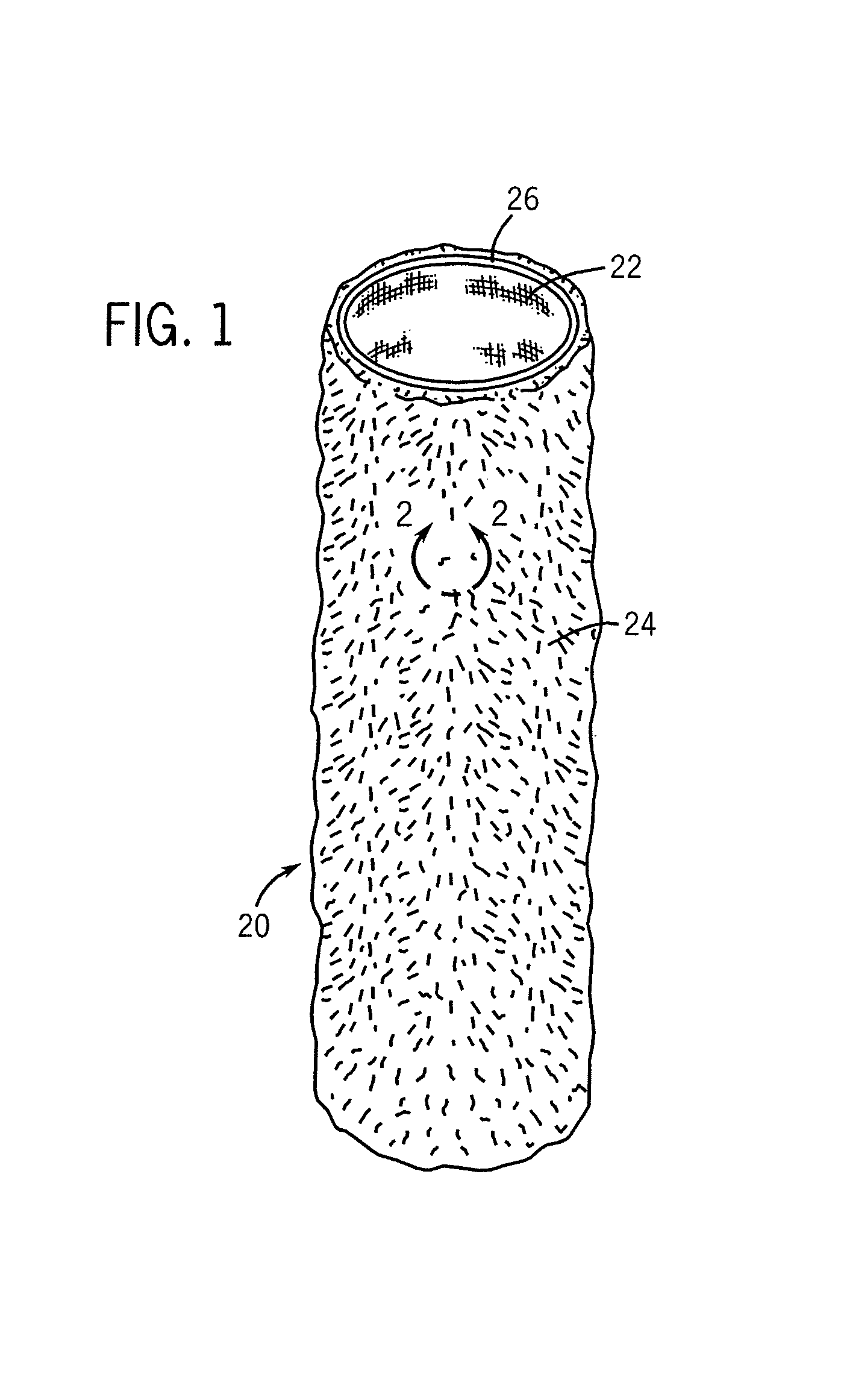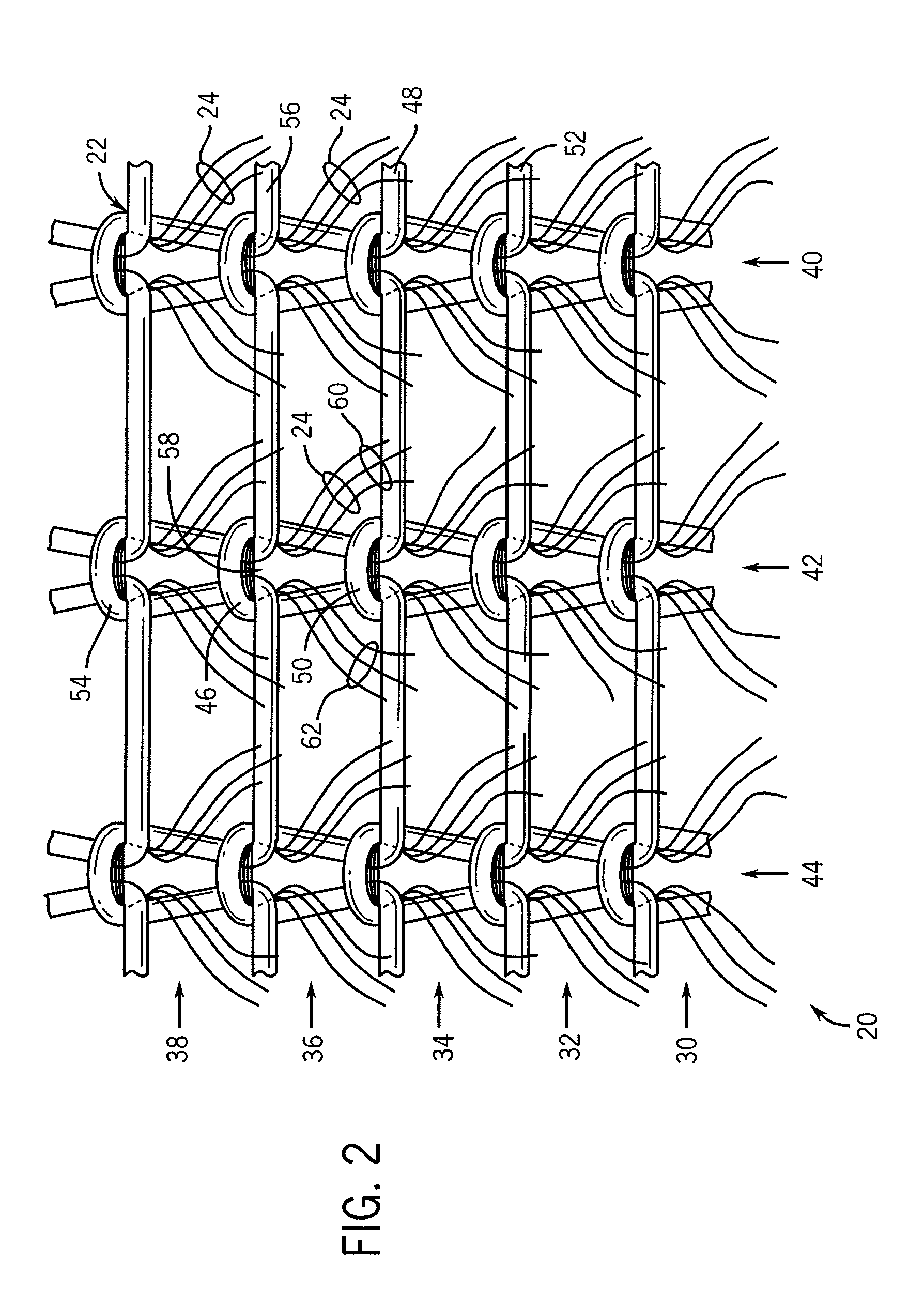Forming a tubular knit fabric for a paint roller cover
a technology of knitted fabric and paint roller cover, which is applied in the direction of knitting, textiles and papermaking, weft knitting, etc., can solve the problems of increasing the cost of manufacturing a roller cover, leaving visible marks on the surface being painted or otherwise coated, etc., and achieves the effect of enhancing durability and robustness
- Summary
- Abstract
- Description
- Claims
- Application Information
AI Technical Summary
Benefits of technology
Problems solved by technology
Method used
Image
Examples
Embodiment Construction
[0048]FIG. 1 shows a first exemplary embodiment of a tubular-shaped sliver-knitted covering 20 for a paint roller having pile fibers 24 extending from a lightweight knit backing or base material 22, that is knitted according to a method illustrated in FIGS. 2 through 9, on a first embodiment of a knitting apparatus 100 shown in FIGS. 10 through 13. As will be readily understood by those having skill in the art, the tubular sliver knit segment 20 may be readily pulled over and affixed to a core (not shown) to form a completed roller cover according to one of the methods shown in the inventor's commonly assigned U.S. patent application Ser. No. 11 / 740,119 or another appropriate manner, without the necessity for resorting to helically wrapping a strip of sliver-knitted fabric about the core as was required in prior roller covers.
[0049]A tubular sliver knit segment 20 of the type shown in FIG. 1 may be continuously knitted in an extended length using the exemplary embodiment of the inve...
PUM
 Login to View More
Login to View More Abstract
Description
Claims
Application Information
 Login to View More
Login to View More - R&D
- Intellectual Property
- Life Sciences
- Materials
- Tech Scout
- Unparalleled Data Quality
- Higher Quality Content
- 60% Fewer Hallucinations
Browse by: Latest US Patents, China's latest patents, Technical Efficacy Thesaurus, Application Domain, Technology Topic, Popular Technical Reports.
© 2025 PatSnap. All rights reserved.Legal|Privacy policy|Modern Slavery Act Transparency Statement|Sitemap|About US| Contact US: help@patsnap.com



